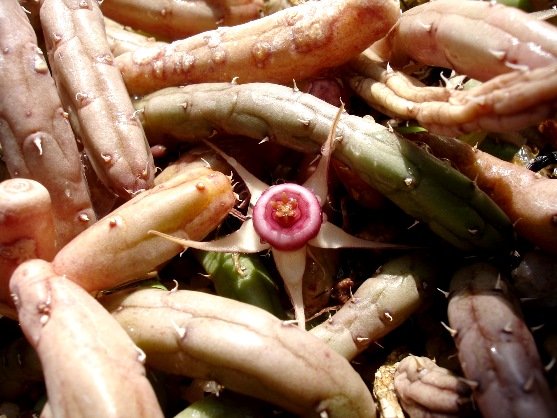Huernia procumbens

Author: Ivan Lätti
Photographer: Judd Kirkel Welwitch
Huernia procumbens, previously known as Duvalia procumbens, is a stem succulent producing trailing branches that become up to 15 cm long and 1,5 cm thick.
Stem colours may include pale green, beige or grey, shading into purple and even dark red during the dry season. The stems are four or five-angled, almost cylindrical, the spaced stem surface tubercles tipped with vestiges of leaves like soft spines that drop off early, leaving white spots. The specific epithet, procumbens, is derived from the Latin words pro meaning forward and cumbere meaning to lie down, referring to the prostrate stems.
The flowers usually grow solitary on pedicels of 1,5 cm emerging near stem bases. The five long and narrow corolla lobes, cream coloured and finely hairy, taper to acutely pointed tips around the prominent purplish annulus. The corolla lobes are unmarked as in the photo or covered in fine dark spots, the corolla measuring over 5 cm in diameter.
The species grows only in the extreme northeast of South Africa in the northernmost part of Limpopo including the north of the Kruger National Park, close to the Zimbabwean border, which is straddled by the plant’s distribution.
H. procumbens grows in sandy and loam soils in shade, sometimes hanging from rocky perches. It is not considered to be threatened in its habitat early in the twenty first century (Hardy and Fabian, 1992; http://llifle.com; www.redlist.sanbi.org).

